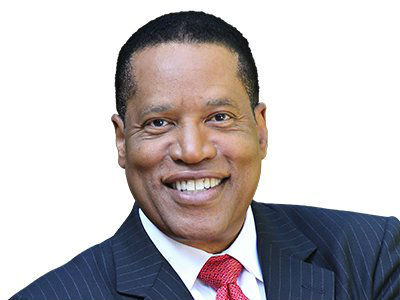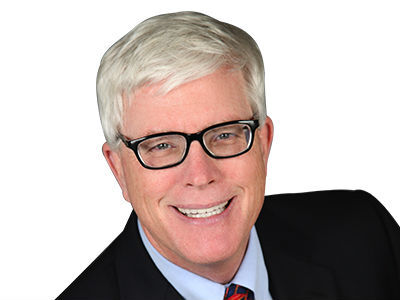How to Help Kids Find Their Identity
Parenting


Audio By Carbonatix
By Catherine Parks, Crosswalk.com
Like all children, my kids loved to pretend when they were young. They would take on a different identity almost every hour, going from “I’m a cheetah,” to “I’m Rapunzel,” to “I’m a news anchor who is also a superhero,” sometimes within the span of thirty minutes. My husband and I would join them in their pretend play, often being the villains they needed to defeat. They would create elaborate costumes to fit their pretend identities, and we would be chastised for calling them by the wrong names.
As they get older, they do far less overt pretending, but they’re still looking for their identity. As kids approach the upper elementary and middle school years, they start to wrestle with the question, “Who am I?” And there are many voices out there speaking into this question.
Am I the choices I make? Am I the feelings I feel? Am I one thing today, and another thing tomorrow? Can I be whatever I want to be? Can my identity change?
These are tough questions. In some ways, our identities can change. For example, growing up, I defined myself partly by my love for gymnastics. I trained multiple days a week and if asked who I was, I might have responded that I was a gymnast. But then puberty hit, and I grew to be several inches taller than the average gymnast. So, I chose to quit gymnastics and start playing other sports. I no longer identified myself as a gymnast.
In high school, I went through a phase where I loved country music. Now, despite living in Nashville, I consider it one of my least favorite musical genres. My food preferences have changed, what I enjoy doing in my free time has evolved, and the styles I wear are different than they used to be.
Maturing kids will often look to these kinds of external things as they wrestle with the question of their identity. When asked who they are, they might respond with a list of things they do or like, such as, “I’m a boy who likes basketball and soccer, video games, and playing guitar.” It’s natural for some of these things to change as they grow older.
But there are some aspects of identity that don’t change, and it’s important for our kids to understand this so they can live in true freedom and joy.
The Joy of Limited Options
Children are now given so many options by which to define themselves, and they’re invited to change those things whenever they feel like it. These options go beyond what kinds of food and music they like and reach instead into the deepest parts of their identities, including aspects like gender and sexuality. This might feel like freedom, but rising levels of anxiety and depression among kids seem to tell a different story.
We’re tempted to think that having many options is a good thing. But if you’ve ever been to a Cheesecake Factory restaurant, you know that a larger menu of choices isn’t always freeing; sometimes it’s overwhelming. How can I possibly choose the best thing? What if I make the wrong choice?
Kids long for stability and some degree of permanency. It’s too heavy a weight for a ten-year-old to have to determine his own core identity. Surely there must be something that makes us who we are, apart from how we feel on any given day. But what is it, and how do we teach it to our kids?
One of the most valuable lessons we can teach our children is that they are designed with intention. Their lives are not an accident or a result of random chance.
Psalm 139:13-14 says:
For it was you who created my inward parts;
you knit me together in my mother’s womb.
I will praise you
because I have been remarkably and wondrously made.
Your works are wondrous,
and I know this very well.
This is a beautiful truth for a child to hear: “You were designed by your Creator to be just who you are. He only made one of you, and His work is amazing!” Even on the days they don’t like who they are—and we’ve all had those days—they can grasp onto this truth.
But we can go even deeper than that. Not only did God create our children with intention and excellence, but He also made them in His image.
Genesis 1:27 says,
So God created man
in his own image;
he created him in the image of God;
he created them male and female (CSB).
In the story of creation from Genesis 1 and 2, only humans are said to be made in God’s image. The animals are amazing, but they do not bear the image of God. But every child bears the image of his or her Creator, and that image is displayed uniquely by each person.
When we talk about identity with our children, we can start with these unchangeable facts:
- You were designed by an amazing Creator to be just who you are
- You are made in God’s image to reflect Him
But there’s more!
Finding Identity in Christ
In Colossians 3:12, Paul writes to Christians, telling us to put on the things that fit with our new identity in Christ. Before, we were lost, dead in our sins. But now, because of the work of Jesus in our place, we are alive in Him.
But before he tells us what to put on, he reminds us of who we are, saying, “Therefore, as God’s chosen ones, holy and dearly loved…”
We are chosen. We are holy (set apart for Him). We are dearly loved.
So as we disciple our children to follow Jesus, we can say to them:
“I know you feel left out and lonely, but isn’t it good to know that God calls you ‘chosen?’”
“I know you feel like you don’t know who you are or you aren’t important, but God has set you apart and calls you ‘holy.’”
“I know you feel like no one loves you, but the Creator of the universe calls you ‘dearly loved.’”
Living Loved
Sometimes our kids feel pressure to define themselves in ways that will cause others to love and accept them. In fact, it’s not just kids who feel that pressure—we all do! But if we can instill in them the hope and peace that comes from knowing they are loved and accepted already, then we can encourage them to be true to who God has created them to be.
In a world that is constantly changing, our kids need to know that some things never change, and at the top of that list is God’s love for them. Their tastes will change and their friends will change, but if they are in Christ, then their deepest identity—chosen, holy, and dearly loved—will never change. And that’s the best news ever.
Photo Credit: ©GettyImages/Halfpoint
Catherine Parks is the author of several books, including two middle grade biography collections, Strong and Empowered and her latest book What to Wear. She also serves as an acquisitions editor for Moody Publishers. Catherine and her husband, Erik, live outside of Nashville, TN, with their children, Sophie and Micah. In her free time, she loves hiking, playing volleyball, and serving on her church's worship team.

























